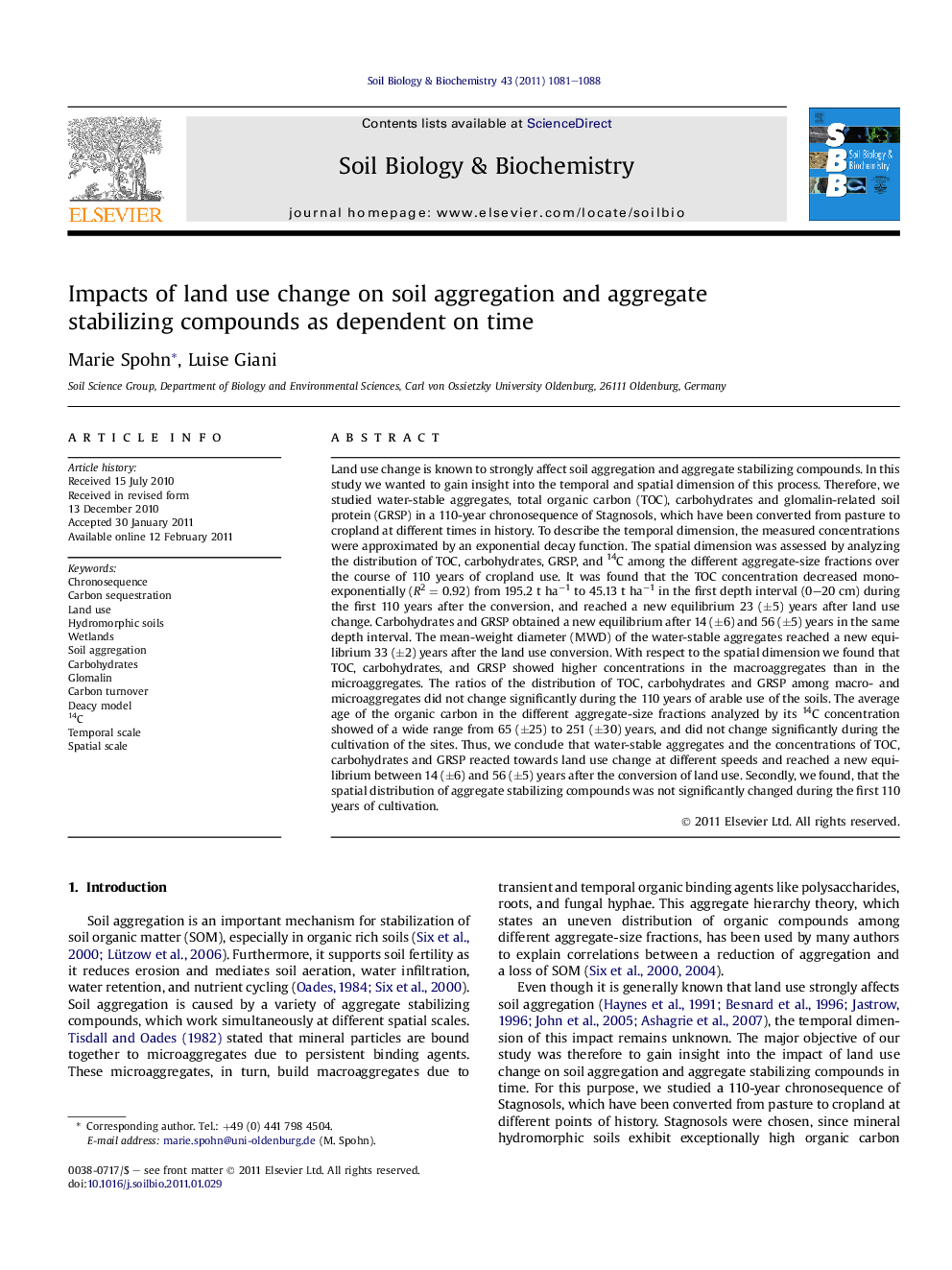| کد مقاله | کد نشریه | سال انتشار | مقاله انگلیسی | نسخه تمام متن |
|---|---|---|---|---|
| 2025530 | 1069999 | 2011 | 8 صفحه PDF | دانلود رایگان |

Land use change is known to strongly affect soil aggregation and aggregate stabilizing compounds. In this study we wanted to gain insight into the temporal and spatial dimension of this process. Therefore, we studied water-stable aggregates, total organic carbon (TOC), carbohydrates and glomalin-related soil protein (GRSP) in a 110-year chronosequence of Stagnosols, which have been converted from pasture to cropland at different times in history. To describe the temporal dimension, the measured concentrations were approximated by an exponential decay function. The spatial dimension was assessed by analyzing the distribution of TOC, carbohydrates, GRSP, and 14C among the different aggregate-size fractions over the course of 110 years of cropland use. It was found that the TOC concentration decreased monoexponentially (R2 = 0.92) from 195.2 t ha−1 to 45.13 t ha−1 in the first depth interval (0–20 cm) during the first 110 years after the conversion, and reached a new equilibrium 23 (±5) years after land use change. Carbohydrates and GRSP obtained a new equilibrium after 14 (±6) and 56 (±5) years in the same depth interval. The mean-weight diameter (MWD) of the water-stable aggregates reached a new equilibrium 33 (±2) years after the land use conversion. With respect to the spatial dimension we found that TOC, carbohydrates, and GRSP showed higher concentrations in the macroaggregates than in the microaggregates. The ratios of the distribution of TOC, carbohydrates and GRSP among macro- and microaggregates did not change significantly during the 110 years of arable use of the soils. The average age of the organic carbon in the different aggregate-size fractions analyzed by its 14C concentration showed of a wide range from 65 (±25) to 251 (±30) years, and did not change significantly during the cultivation of the sites. Thus, we conclude that water-stable aggregates and the concentrations of TOC, carbohydrates and GRSP reacted towards land use change at different speeds and reached a new equilibrium between 14 (±6) and 56 (±5) years after the conversion of land use. Secondly, we found, that the spatial distribution of aggregate stabilizing compounds was not significantly changed during the first 110 years of cultivation.
Research highlights
► SOM stocks decreased by 73% in Stagnosols following land use change from pasture to cropland.
► Concentrations of carbohydrates and glomalin-related soil protein reached a new equilibrium 23 and 56 years after land use change.
► Distribution of soil organic matter among aggregate-size fractions did not change significantly over the course of 110 years of cropland use.
► The age of the organic carbon in the aggregate size fractions ranged from 65 years in the fraction >2000 μm to 245 years in the fraction >200 μm.
Journal: Soil Biology and Biochemistry - Volume 43, Issue 5, May 2011, Pages 1081–1088